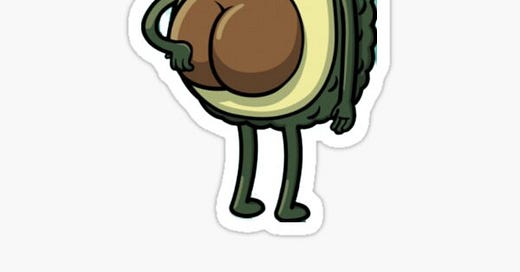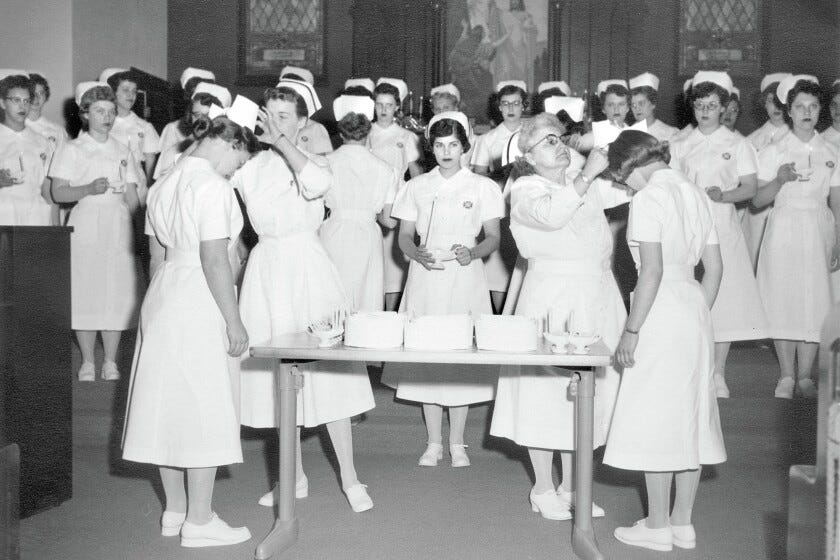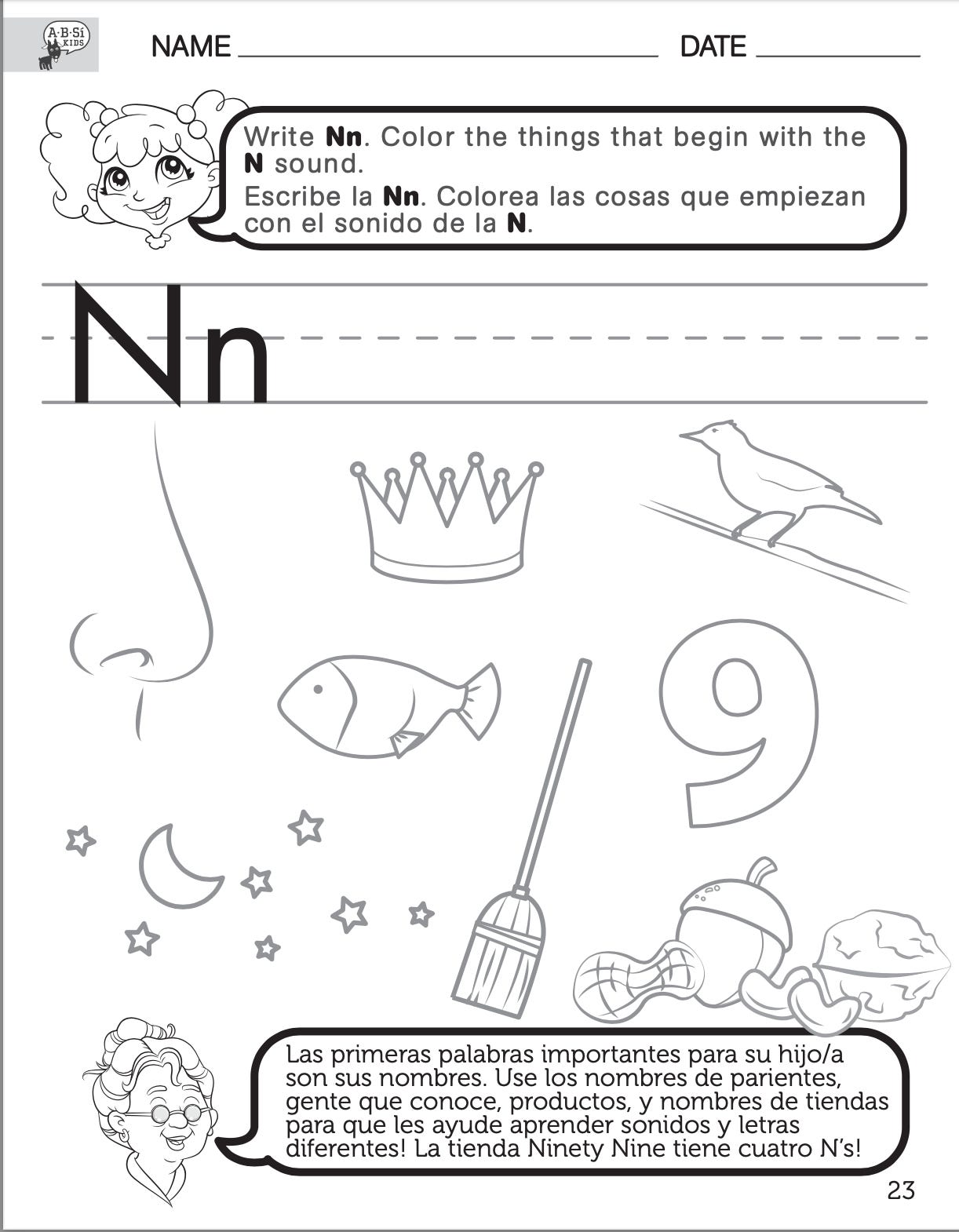N is for Not Exactly
One of my Latino first graders came up to me to report that another Latino little boy had just uttered the N-word.
I was horrified. At that time, I taught in an overwhelmingly Latino and Cambodian-populated school in Los Angeles. The one Black student in my class, Conrad, was super smart, very creative, a good writer, and everybody got along with him. Also, the student who supposedly uttered the N-world was an immigrant little boy who didn’t speak English all that well and wasn’t necessarily a behavior problem. I was confused by the situation.
I was also especially touchy because Conrad’s mother, during a parent-teacher conference, asked me how our school celebrated Black History Month. I stammered the truth, “Uh…um…uh. We don’t.” I realized then that our school’s multicultural education was lacking. And now here were my kids potentially exhibiting the effect of that lack by dropping N-bombs in the classroom.
But I was also confused because these were six-year-olds and although I’m sure many of them got exposed to the gritter vocabulary of city life in LA they were still pretty innocent and naïve.
So, on a hunch, and instead of jumping to conclusions, I asked the boy who was doing the tattle-telling, “What’s the N-word?” At first, he refused to repeat it. But something told me that I should press him. I told him that it was alright. He had immunity. He wasn’t going to get in trouble if he said it. I offered him the opportunity to whisper the N-word into my ear.
I leaned into him, he put his hand at his mouth, and then he gently whispered in my ear: nalgas.
Nalgas means butt cheeks in Spanish. It begins with the letter N.
I tried not to laugh too much. I told the other little boy not to be saying nalgas.
And I then realized the power of N-words.
N is for Nurse
I went to a Catholic all-boys high school.
Our male school nurse was named Nurse Day. Us boys knew that at one point during our junior year health class Nurse Day would leave his office and venture into our classroom to deliver a much-anticipated lecture about sexually transmitted diseases (now called sexually transmitted infections).
It was understood that the purpose of his presentation was not only to educate us, but also scare the bejesus out of any potential sexual experimentation we might be engaged in.
One of the tactics in his presentation was showing us graphic pictures of genitalia in the throes of extreme forms of syphilis, gonorrhea, and herpes—mostly male. If Catholic school was going to have sex ed class, this was definitely the horror-show version you’d expect.
The photos were very genitalia-centric. It’s not like we were shown pictures of men dying of AIDS-related pneumonia in hospital beds or syphilis-caused facial scarring.
It was mostly full-color 8x10s of dicks with sores.
As Nurse Day passed around portraits, a loud white boy in the class suddenly shouted out in disgust at one photo in particular, “Ewwww. Why is it black!?!”
Nurse Day, in deadpan monotone, responded, “Because Black men have black penises.”
There was a long beat and then the class erupted in laughter at Loud White Boy’s ignorance.
That experience has stayed with me almost thirty years later because it revealed an unguarded moment of a White person revealing their unfiltered thoughts about Blackness/blackness. Loud White Boy didn’t even pay attention to the inflamed sores he was supposed to be noticing on the graphic “head” shot. Instead, he zeroed in on the black skin, assuming that the skin color was the true abnormality.
A White person who has read this story of mine immediately came to the LWB’s defense, asserting that diseased “things” do, in fact, turn black and so therefore LWB’s conclusion was logical and reasonable. LWBs loooove to work their form of “logic” into any scenario they can. But disease comes in a rainbow of discolorations: green eye pus, yellow jaundice, purple necrotizing skin infections, red rashes, and white leukoplakia. The impulse to protect White innocence instead of confronting racially-biased thinking continues to hold strong in this country, even amongst friends.
Looking back at the episode now, it harkens back to something us high schoolers didn’t know about then, and to what probably should’ve been the real lesson of that day.
The Tuskegee Study of Untreated Syphilis in the Negro Male was a secret medical experiment run by the U.S. Public Health Service from 1932 to 1972. The study followed the progression of the untreated venereal disease in Black men who were intentionally NEVER informed of their syphilis diagnosis nor given any ameliorating treatment. No consent was ever taken from participants and the men were, instead, told that they had cases of “bad blood.” There was one nurse in particular, Nurse Rivers, who served as the conduit between the researchers and the sick men, often chauffeuring them to doctor appointments, but also making sure the participants did not receive any proper treatment outside the study.
The Tuskegee story of racist medical malfeasance is the story us high school boys should have been being told about venereal diseases because there’s a way to teach things without directly teaching them. A whole bunch of points about health, history and U.S. society could have been covered with a lesson about Tuskegee instead of a genitalia freak show .
In fact, the most important things in life are learned by proxy. There are very few direct lessons that stick. Because our words don’t teach. Our experiences do.
N is for the N-word
When I was a third-grade student at Belvedere Elementary in East LA, I could count the number of Black people I knew on one hand. On three fingers, to be exact. My father’s work friend, Erbie; my second-grade teacher, Ms. Johnson; and now my third-grade teacher, Ms. Keys.
Ms. Keys was a tall, beautiful Black woman with the darkest skin I had ever seen on a person. She shined black. This was very different than Ms. Johnson who was a high yellow, very proper lady who played a harpsichord and wore blouses with pussy bows. Ms. Keys was also always very put together, well-dressed, and very prim and proper. She was a strict disciplinarian who liked order in her classroom. And she liked me because I was a good student who came to school prepared and well-dressed thanks to a doting mother.
There was a light-skinned Latina student named Brenda in our class. She might have been White or of a mixed ethnicity, I don’t know for sure. What I do know was that she was a little terror. She was mean and nasty to everyone. She was not my friend, and I stayed away from her and her troubles. Maybe she acted out at school because she came from a difficult household, but I didn’t know her backstory, so I can’t offer her too much of the benefit of the doubt. Either way, she wasn’t any of my business. Brenda was rude to everyone including Ms. Keys. But Ms. Keys was a powerful teacher in full control of her classroom.
One time, Brenda was trying to get Ms. Keys’ attention in that infuriatingly annoying way kids repeat their teacher’s name ad nauseum. “Ms. Keys. Ms. Keys. Ms. Keys. Ms. Keys,” she kept saying, but Ms. Keys ignored her.
Well, after a few seconds of being ignored, Brenda finally shouted out, “Helen!” as if she was a grown woman calling out to another lady from across the street.
How she knew Ms. Keys’ first name I have no idea. I didn’t ever know any of my teachers’ first names, that was the province of God and the principal. But Brenda wielded our teacher’s name with such a loud snap of disrespect that it halted the entire class. Of course, Ms. Keys was upset at hearing her first name called out so brazenly. I don’t remember what the punishment was, but Brenda was definitely scolded.
Then one day Brenda upped the ante. Again, she was angry at Ms. Keys for I don’t know what this time, and they were going back and forth, arguing in front of the class, in front of all of us, which wasn’t unusual, until Brenda, an 8-year-old sitting at her desk, called out to a standing Ms. Keys, “You’re just a n*****!”
Silence enveloped the classroom. How did we all know to be so very quiet?
Maybe Brenda had already primed us by disrespecting our teacher so many times before. Maybe ramping up a sentence with “You’re just a…” can only be followed by an obvious insult.
However, this time the quality of Brenda’s disrespect wasn’t the same, and how we all knew it wasn’t the same is still unknowable to me. I had never heard that word before, but some words are just always curses from their very inception in the same way some words are just always funny like doink and razzamatazz or Cucamonga.
N***** requires that you push your tongue up against your upper front teeth like you’re about to flick it the way a venomous snake would, but then you have to make a sudden turn from a flick into a growl—errrrrr. It’s a predacious word full of pointed fingers and vinegar, flicks and growls.
In my memory, Ms. Keys shouted something back to Brenda out of reflex. An outburst happened, but I don’t remember what that outburst was. Whatever it was it went away quickly. Then my teacher stood still for a long minute. She had excellent posture.
The word itself left an expanding hot energy stifling the room that made everyone sit up straight, listening for the next movement, similar to when a predator enters a jungle and the birds stop twittering.
I could see, at first, the shock followed by the rage in Ms. Keys’ face as she initially withstood the boom and then the blast of the slur. But then my teacher looked, for the first time ever, unprepared. She wobbled.
I became frightened. She was after all, the preparer of our days. The one who usually announced to us, “This is going to happen, then this, then this, then that.” What was going to happen now?
Anger was on her face, for sure. We had all seen that mad face before, her bottom lip in high pout, narrowed eyes, the chin a little raised. Ms. Keys suffered no fools. We had seen this expression and knew there was trouble.
But this time it wasn’t like she was going to deploy something—a punishment, a retort, a shout, a threat, a question even. Instead, it looked as if Ms. Keys was trying to contain something.
Even then, as a little person who knew only of cartoons and homework, maybe made wiser of the anguish of the world through arguing parents or loud homeless men but still essentially unschooled in true heartbreak, I could see, and feel, something emerging other than just anger. There was a hurt and humiliation gathering in the vicinity of her nose, mouth, and eyes like she had eaten something unexpectedly hot and sour.
Ms. Keys looked like a bronze, vibrating statue about to turn into a supernova. I was eight and I didn’t know exactly what I was witnessing then because it was the first time I was witnessing it. It’s like the first time you see something dead or pornographic. It’s taken nearly forty years to add dimension to it.
However, before Ms. Keys could break, explode, before she could un-contain herself, she fled. Our teacher turned and bolted out the classroom door. A sentinel abandoning her post.
I suppose our teacher’s aide was still there to watch over us, but I was confused and worried about my teacher simply fleeing. When will she be back? Something monumental had just happened, and I knew it centered around that word Brenda used that I had never heard before.
But this wasn’t simply a vocabulary lesson. I wasn’t learning a new word. The word was a stand in, practically a hieroglyphic, for something far more gargantuan. It was a lesson in white supremacy. It was a demonstration on how a light-skinned little girl could fell a towering Black teacher with the chop of one word. I learned that a white kid can hurt a grown Black person without even touching them as if in possession of some ancient, inherited, telekinetic hex.
Mr. Quihuis, our principal, came into our classroom without Ms. Keys. He lectured us on the word Brenda used. He was soft spoken and calm, almost boring in his lecture. He was a dark man. Native American and Mexican. It was rare for the principal to come into our room and speak to us as a class—he had a whole school to run after all. But there he was, speaking words I don’t remember (words don’t teach!). Then Brenda left with him.
After a while, Ms. Keys returned, of course. We continued our day, our month, our year. We never mentioned what happened again, although I always remembered it.
Whatever that word really meant, however it had been applied in its ingloriously violent history, at its first insertion into my world, I learned it meant a white child could be more powerful than a big strong beautiful intelligent Black woman teacher. It’s a weapon.
The word didn’t teach me that, the experience did.
Because words don’t teach. Experiences do.






